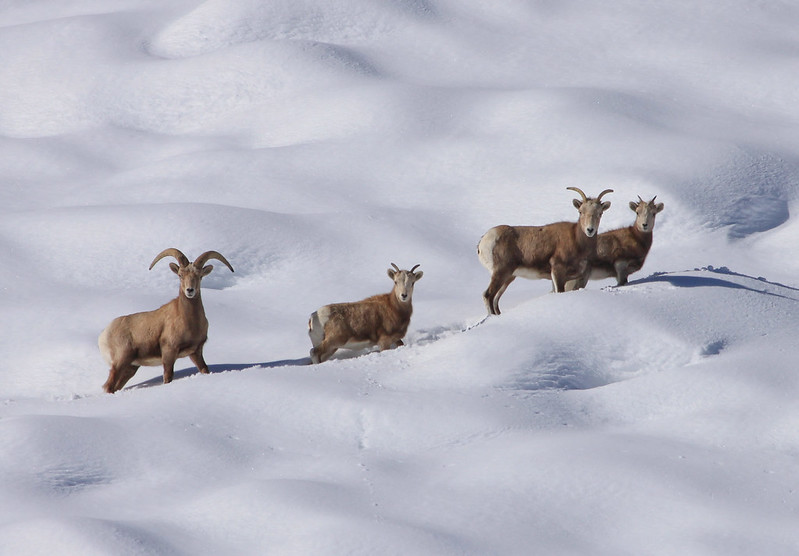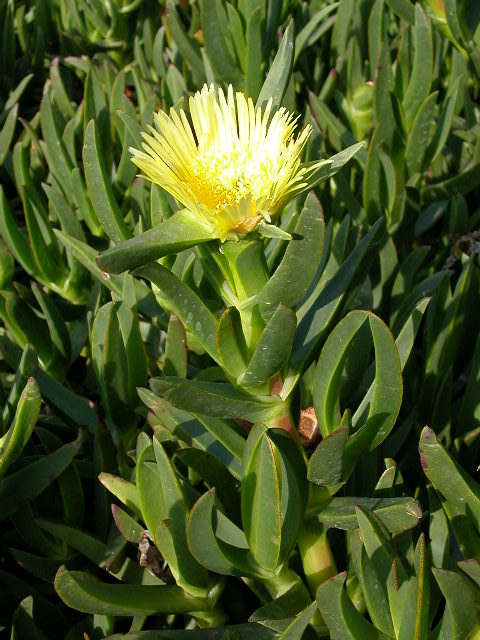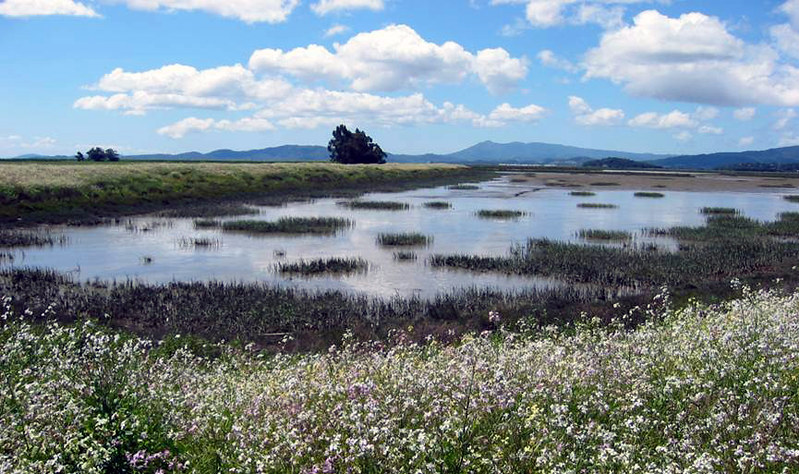What is Climate Change?
Climate is defined as prevailing weather conditions averaged over several decades. Earth’s climate has changed throughout time, transitioning in and out of periods of global warming and cooling, mostly due to changes in the Earth’s orbit and associated fluctuations in the amount of solar energy received by the planet. Over the past century however, the climate has changed at a rate that is unprecedented over decades to millennia.
According to the Intergovernmental Panel on Climate Change (IPCC), “scientific evidence for warming of the climate system is unequivocal”, and recent climate change is extremely likely to have been caused by human activity since the mid-20th century, namely through activities that result in the emission of greenhouse gases (see the IPCC Fifth Assessment Report, Summary for Policymakers (PDF)(opens in new tab) for more information). In other words, global temperatures are warming faster than they would naturally, without increased emissions of greenhouse gases such as methane and carbon dioxide.
How is the Climate Changing in California?
 Bighorn sheep traveling through snow. Snowpack is expected to decline under climate change. CDFW photo by Steve Yeager.
Bighorn sheep traveling through snow. Snowpack is expected to decline under climate change. CDFW photo by Steve Yeager.
Global climate models are used to project future climate trends based on historical climate and known exchanges of energy between land, atmosphere, and ocean. Climate projections for California indicate that temperatures will rise, snowpack will decline, wildfire activity will increase, ocean temperatures will rise, important ocean-atmosphere interactions (winds, currents, and coastal upwelling) will likely shift, and more. These changes will not be uniform across the landscape but will vary in extent and magnitude.
In fact, these types of changes have already been observed in California. Air temperatures have risen, heat waves are becoming more frequent, snowpack has shrunk, streamflow patterns have changed, and more. These changes have exacerbated drought conditions and wildfire events in the state. Sea level rise and changes in ocean chemistry have also been observed along the California coastline. For more information on documented climatic changes in California and future climate projections, see the Statewide Summary Report (PDF)(opens in new tab) from the state’s fourth climate change assessment.
What Does Climate Change Mean for California’s Biodiversity?
Biodiversity (or biological diversity) refers to the variety of life from ecosystems to species to genes. There are many ways that biodiversity can be affected by climate change. For example, species can be directly impacted, like Salmon being exposed to warming stream temperatures that threatens their survival. Species can also be affected indirectly through climate-induced changes in food, water, and habitat availability. Since ecosystems are highly interconnected, impacts to individual species often have consequences for other species within the system.
 CDFW biologist releasing a Chinook salmon in Butte Creek. Salmon have already been affected by warming stream temperatures and prolonged drought conditions in the state. CDFW photo by Harry Morse.
CDFW biologist releasing a Chinook salmon in Butte Creek. Salmon have already been affected by warming stream temperatures and prolonged drought conditions in the state. CDFW photo by Harry Morse.
In California we have seen shifts in species abundances and distributions (how many relative to where they are found on the landscape), and in the timing of important life-cycle events such as flowering, pollination, breeding, and migration. Climate change has also contributed to the spread of invasive species and pests, which pose a threat to the survival of native species and usually disrupt ecosystem processes. Habitat loss and species extinctions are also occurring. Throughout California, these types of changes have been observed across terrestrial, freshwater, estuarine, and marine ecosystems.
Healthy ecosystems and ecological processes provide direct and indirect benefits to Californians such as clean air, clean water, crop pollination, and recreational opportunities such as hunting, fishing, and wildlife viewing. These benefits, sometimes referred to as ecosystem services, are tied to biodiversity and therefore are also at risk of being negatively impacted by climate change.
For documented examples of observed impacts of climate change in California, see the latest report from the California Office of Environmental Health Hazard Assessment on Indicators of Climate Change in California(opens in new tab). To learn more about which species may be most vulnerable to the impacts of climate change, please visit the department’s climate change vulnerability web page.
What is CDFW Doing to Address Climate Change?
 Iceplant (carpobrotus edulis) is an invasive species in California. Changing climate conditions will support the spread of many invasive species. CDFW photo.
Iceplant (carpobrotus edulis) is an invasive species in California. Changing climate conditions will support the spread of many invasive species. CDFW photo.
Changes in climate pose risks to natural resources and people, thereby creating challenges for the California Department of Fish and Wildlife (CDFW) tasked with managing these resources in perpetuity for future generations, while also allowing public access for people to recreate and learn. To safeguard natural resources in the state, CDFW is taking a multi-pronged approach that includes the following:
- Building resilience of the natural landscape to climate impacts by utilizing scientific tools to inform adaptive ecosystem management,
- Promoting carbon storage in natural and working lands to mitigate greenhouse gas emissions, and
- Frequently coordinating with other state agencies and non-governmental organizations to ensure our approaches are complementary with a higher likelihood of yielding positive results.
Communication is also key to cultivating an understanding of climate-related risks and solutions amongst partners and the public. We strive to clearly communicate about this topic and provide access to relevant information through various resources, including this website, related reports, and publications, and through the development of new interpretive panels that will be installed on multiple properties with public access, such as wildlife areas and ecological reserves.
Adapting to Climate Change – Creating a Resilient Landscape
CDFW is taking action to ensure species and their habitats are as healthy, robust, and resilient to environmental change as possible to give them the best chance for survival. Examples of these types of actions include:
- Restoring degraded habitat
- Conserving critical linkages and movement corridors for species to use as they shift on the landscape in search of suitable habitat or food
- Identifying and protecting areas of refugia or areas relatively buffered from the impacts of climate change
- Reducing existing stressors to biodiversity, such as invasive species
- Conducting and supporting scientific endeavors to detect and monitor the impacts of climate change and inform management approaches and conservation goals.
 Sears Point wetland restoration in Sonoma County. Restoration activities are crucial to enhancing landscape resilience to climate change. CDFW photo.
Sears Point wetland restoration in Sonoma County. Restoration activities are crucial to enhancing landscape resilience to climate change. CDFW photo.
Together, this portfolio of actions will help fish, wildlife, and plants adapt to impending climatic changes and associated effects. To learn more about the state’s climate change adaptation goals and strategies for biodiversity and habitat, as well as several other sectors, check out the Safeguarding California Plan: 2018 Update (PDF)(opens in new tab).
The department implements restoration and conservation activities through a variety of programs focused on terrestrial, aquatic, and marine ecosystems; visit other pages on the website to explore these activities in the context of land and species management, landscape-scale conservation planning, invasive species management, marine protected areas, grant programs, and more.
Mitigating Climate Change
Climate change mitigation involves addressing sources of greenhouse gas emissions, for example within the transportation and agriculture sectors. It also includes activities to increase energy efficiencies or reduce energy consumption and waste in business operations. These types of actions are sometimes referred to as “sustainability” activities. The department has a Sustainability Unit that is dedicated to planning and implementing sustainability initiatives.
Climate change mitigation also refers to efforts to capture greenhouse gases from the atmosphere (through natural processes like the uptake of carbon dioxide during plant photosynthesis) and protecting the existing carbon stored in plants and soil to prevent its release into the atmosphere. This type of mitigation is referred to as carbon sequestration in natural and working lands and is relevant to many different habitat types including coastal wetlands, forests, deserts, grasslands, and even eelgrass beds in the ocean. The department supports projects to sequester and protect stored carbon in natural lands. For more information, visit CDFW’s Wetland Restoration for Greenhouse Gas Reduction Grant Program page.
Ongoing Efforts
The CDFW Science Institute works to advance efforts to evaluate climate risks relevant to CDFW’s mission with particular focus on CDFW-managed lands and waters, and to identify and implement strategies to address those risk. Examples of some of these efforts include:
- Ongoing: An internal Climate Change Focus Team facilitated by the Science Institute.
- Recently completed: A department-wide climate change survey to understand climate-related information, data, and guidance needs.
- In progress: A state-wide climate-biodiversity sensor network on department lands to detect and monitor on-site changes in climate and associated impacts to species and ecosystems.
- Upcoming: A climate risk assessment of department lands, including wildlife areas and ecological reserves.
Related Information